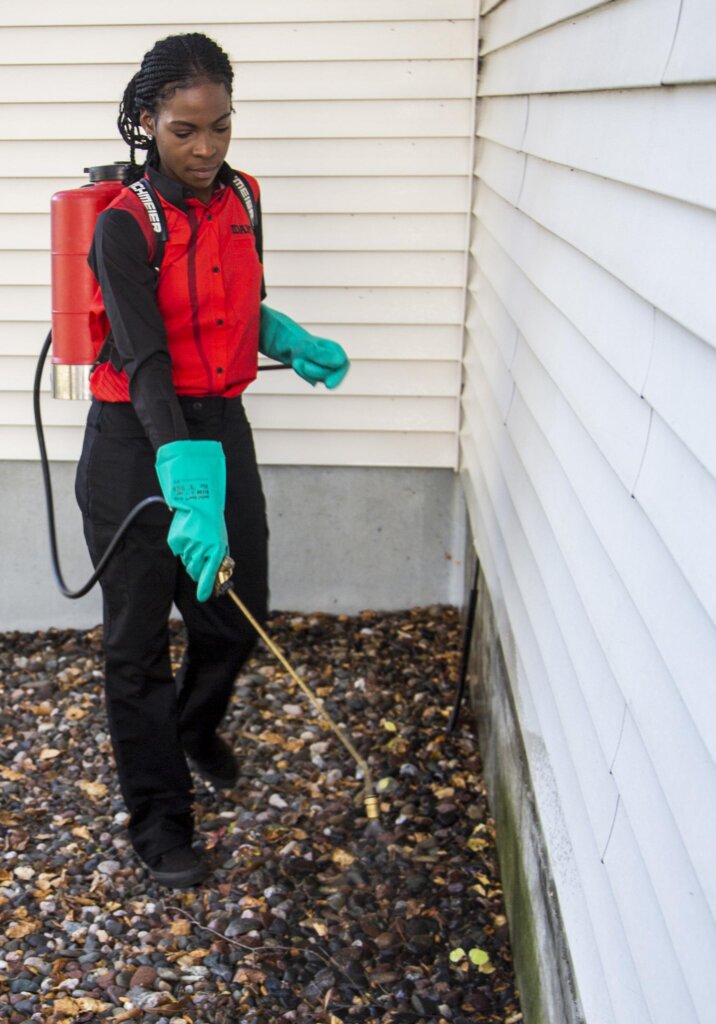Comprehensive Pest Control for 365-day protection from pests.
Comprehensive Pest Control for 365-day protection from pests.
Blog Article
Eco-Friendly Pest Control Approaches for Managing Wildlife in Urban Locations
Urban locations typically locate themselves at the intersection of human activity and wildlife, leading to unique obstacles in insect administration. These approaches not just secure the environment yet likewise boost neighborhood involvement in wild animals administration. As metropolitan populaces proceed to grow, comprehending the characteristics of wild animals interactions ends up being significantly essential.
Understanding Urban Wildlife Dynamics
Comprehending Urban Wild animals Dynamics is vital for developing reliable and environment-friendly insect control techniques. Urban areas are significantly becoming habitats for various wild animals species, driven by variables such as habitat fragmentation, food schedule, and human advancement. Recognizing these characteristics permits a nuanced strategy to pest management that straightens with eco-friendly principles.
Urban wild animals frequently consists of varieties such as raccoons, squirrels, and birds, which adapt to city settings, finding particular niches in environment-friendly spaces, parks, and even suburbs. Their visibility can bring about problems with people, specifically when they make use of human sources for food and shelter. Comprehending the actions and eco-friendly duties of these varieties informs techniques that minimize unfavorable interactions while advertising biodiversity.
Furthermore, recognizing the interdependencies within city environments aids in determining vital locations for habitat conservation and repair. This expertise adds to the advancement of integrated pest management (IPM) techniques that consider the environmental balance, therefore minimizing reliance on damaging chemicals. By fostering conjunction in between human beings and metropolitan wildlife, cities can develop healthier settings that benefit both locals and regional environments, leading the way for lasting urban living.
Natural Repellents and Deterrents
Natural repellents and deterrents supply a sustainable choice to traditional bug control techniques by using the power of nature to maintain unwanted varieties at bay. These green services usually make use of plant-based ingredients, essential oils, and various other naturally occurring substances that discourage parasites without damaging the environment.
One efficient all-natural repellent is peppermint oil, which is known to drive away rodents and insects. Its solid scent is undesirable to lots of insects, making it a prominent selection for urban setups. In a similar way, vinegar and citrus peels can act as deterrents, as their strong smells are commonly unappealing to numerous wild animals.
In addition, diatomaceous planet is an all-natural powder that can be spread in locations prone to parasite activity, efficiently dehydrating and deterring bugs without posturing threats to non-target types. Garlic sprays and neem oil are recognized for their capability to push back a large range of bugs, including both insects and bigger wildlife.
Implementing these all-natural repellents not only lowers reliance on chemical pesticides but likewise advertises a much healthier metropolitan ecological community, promoting an extra well balanced coexistence between humans and wildlife. By utilizing these approaches, city areas can effectively manage insect populaces while reducing ecological effect.
Environment Adjustment Techniques
Reliable environment adjustment methods play an important duty in sustainable bug monitoring by changing the atmosphere to make it less for pest invasions. By understanding the ecological characteristics of metropolitan locations, residential or commercial property owners can execute critical adjustments that hinder bugs while promoting biodiversity.
(Bed Bug Exterminator)One key technique entails preserving appropriate hygiene. This includes regular waste elimination, securing trash bins, and eliminating standing water to decrease reproducing websites for insects and rodents. Furthermore, landscape design practices such as picking native plants can enhance ecological equilibrium, providing environments for useful microorganisms while lessening sources for insects.
Another essential method is to secure entry points in buildings. Inspecting and repairing fractures in foundations, walls, and windows can substantially reduce bug gain access to. Additionally, producing physical barriers, such as fences or plant buffers, can hinder wildlife movement right into human-inhabited areas.
Integrated Bug Administration Practices
Building upon habitat adjustment strategies, integrated insect monitoring (IPM) techniques offer an all natural strategy to regulating pest populations while decreasing ecological impact. IPM integrates various strategies, consisting of organic, cultural, mechanical, and chemical controls, to attain reliable insect administration.
Organic control entails the introduction of natural killers or bloodsuckers to lower parasite populations. Cultural methods, such as plant turning and sanitation, interrupt pest life cycles and reduce their habitats - Pest Control. Mechanical controls, like traps and obstacles, offer prompt remedy for bug pressures without chemical intervention
Chemical controls are used as a last hope, focusing on targeted applications that limit damage to non-target varieties and the atmosphere. The selection of eco-friendly chemicals, when essential, is essential to the IPM framework. Furthermore, checking pest populaces and evaluating prospective damage aids notify decision-making, guaranteeing that interventions are prompt and reliable.
Neighborhood Participation and Education And Learning

(Wasp removal Port Charlotte)Workshops and informational sessions can equip residents with understanding about native types, habitat preservation, and reliable non-toxic bug management strategies. Collaboration with schools, neighborhood organizations, and federal government firms further enhances instructional outreach, ensuring that necessary information gets to diverse audiences.
Furthermore, community-led initiatives, such as area clean-up days and environment restoration projects, not just advertise biodiversity yet also strengthen neighborhood connections. Pest Control. By encouraging citizens to share their experiences and monitorings, neighborhoods can develop targeted approaches that resolve certain neighborhood pest problems
Including feedback from locals into pest monitoring intends enables a more receptive and adaptive strategy to wildlife difficulties. Inevitably, informed and engaged neighborhoods are essential to accomplishing lasting success in environment-friendly pest control, resulting in much healthier metropolitan environments that value both human and ecological needs.

Verdict
In verdict, environment-friendly parasite control comes close to offer sustainable remedies for managing urban wild animals. By focusing on habitat modification, utilizing natural repellents, and implementing integrated insect monitoring techniques, neighborhoods can foster an unified conjunction with regional fauna.
Report this page